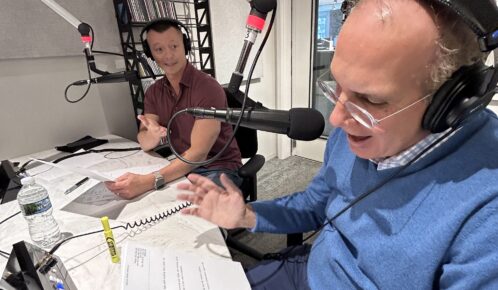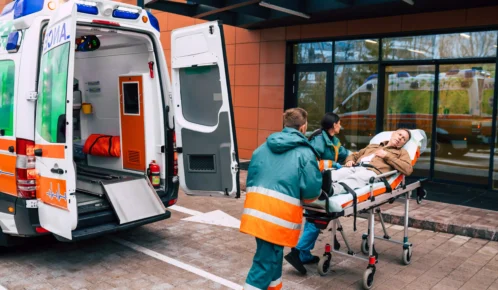If you have been injured in a slip and fall accident and want to recover damages, you must prove the four elements of a slip and fall accident claim. A slip and fall attorney with Ankin Law can help you understand the elements and how to prove them.
Table of Contents

Proving Your Slip and Fall Accident Claim
To recover damages in a slip and fall case, your slip and fall lawyer will have to prove the following four elements:
(1) A duty of care was owed,
(2) a hazard existed on the property,
(3) causation, and
(4) you suffered a significant injury.
This guide is a helpful first step in understanding slip and fall accident claims. For help with your personal injury claim, you can find the best slip and fall attorneys in Chicago at Ankin Law.
A Duty of Care Was Owed
The first element you must prove is that the property owner owed you a duty of care. To prove slip and fall injury liability, you must show that you were on the property legally when you were injured. If you are an invitee or licensee of the property owner, you are on the property legally. If you entered the property without an invitation, you are a trespasser.
Invitee
You are an invitee if the property owner explicitly invited you onto the property for the owner’s benefit. Customers of a business, maintenance workers, and tenants in an apartment building, among others, are invitees. For example, you are an invitee in the case of a mall slip and fall or a grocery store fall.
Licensee
You are a licensee if you visit the property for your own purpose. A friend or family member of the property owner visiting the property would be a licensee. Although the property owner may have invited you to the property, your visit does not provide any clear benefit to the owner.
Trespasser
You are a trespasser if you illegally enter a property without the owner’s permission. The owner does not usually owe a duty of care to trespassers. However, the owner is not allowed to purposefully harm trespassers.
A Hazard Existed on the Property
The next element that you must prove in a slip and fall case is that there was a hazard on the property. Property owners have a duty to keep their property safe for guests and visitors. They are required to remedy hazards that could injure visitors to their property. To prove this element, you must show that (1) there was an unsafe condition on the property, and (2) the owner was aware, or should have been aware, of the hazard.
Hazardous conditions might include:
- Slick floors
- Uneven flooring or walkways
- Cracked sidewalks
- Potholes
- Debris on the floor
- Wet pavement
You may be able to prove the owner knew about the hazard through witnesses or other evidence.
If you cannot prove the property owner knew about the hazard, your slip and fall accident attorney can show the court that the owner should reasonably have known about the hazard. When deciding whether the owner should have known about dangerous conditions, the court will typically consider:
- How long the dangerous condition existed
- If the owner routinely inspects the property for hazards
- What procedures the owner uses to check for hazards
- If the owner could have made the dangerous conditions less hazardous by taking preventative measures.
Causation
The third element you must prove is causation. You must show that you have an injury that was directly caused by the hazardous condition on the property. You will need to show that your injury would not have happened but for the hazardous condition on the property that exists due to the owner’s negligence.
You can prove your injury was caused by the dangerous conditions on the property in many ways. You can:
- Provide eyewitness testimony. If other shoppers or visitors witnessed your fall, they may be willing to give statements about what happened.
- Provide surveillance footage of the slip and fall. Many businesses have security cameras recording the inside or outside of their store. You can request their footage to show the court that the hazardous condition on the property caused your fall.
- Provide medical records. If you seek medical treatment after a fall injury, your doctor can document your injuries. Your medical records will include the likely cause of your injuries. You can submit your medical records as evidence.
- Provide a slip and fall case timeline. If you make a timeline of your accident soon after your fall, you may be able to use it as evidence of the causes of your injuries.
A Significant Injury Occurred
Finally, you must show that your fall led to a significant injury that caused you to suffer damages. Even if you prove the first three elements, you will not recover any monetary damages if you cannot prove that you suffered damages. However, you can prove that you suffered damages by showing the cost of:
- Past and future medical treatment
- Lost wages
- Loss of ability to earn an income
- Rehabilitation
- Medical assistive equipment
- Prescription medications.
These economic damages are meant to reimburse you for the financial burdens your injury caused. They should make you “whole” as if your injury had not occurred.
Some damages are easy to prove, such as your medical costs to treat the injury. However, you may have a more difficult time assigning a monetary value to your pain and suffering and other non-economic losses. Damages for pain and suffering are more subjective. A jury can decide what your physical pain and mental anguish are worth. Depending on your particular injury, the damages for your pain and suffering may be worth significantly more than your economic damages.



